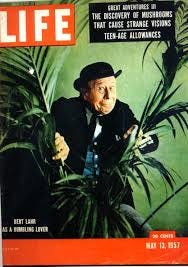Much of the language and alleged knowledge promoted by psychedelic advocates today does little more than rehash the unfortunate stereotypes of the first psychedelic renaissance. The hippies’ indulgences of the 60s led to Richard Nixon’s war on drugs, started in 1971, the harm of which we have yet to undo. The ideas of both—the hippies and Nixon—are still alive and well.
Popular psychedelic advocates keep repeating the same tropes. Many of these ideas entered popular culture in 1957 when Life Magazine published the article, “Seeking the Magic Mushroom.” Gordon Wasson, the vice president for public relations at J.P. Morgan & Company, unintentionally promoted the Mazateca Indians and Maria Sabina as mushroom shamans in his Life Article. He didn’t realize the article would lead to legions of hippies traveling to Mexico to seek out Maria Sabina, and the mushrooms. The attention caused Sabina’s community to ostracize her, and practices were subsequently altered for outsiders.
I got the tropes below from a talk by Nicholas Spiers, a queer anthropologist and documentary filmmaker, who works as Chacruna’s research coordinator. Spiers studies sensory experiences of audiovisual mediums and did field work in Mazateca. He co-directed the web series The Peyote Files. He also made this video: Debunking 6 Racist Myths from the Psychedelic Community.
The same psychedelic traditions and practices we use today stretch back to the beginning of time in indigenous communities. Actually, obviously: spiritual practices evolve over time. Even a rudimentary understanding of peyote or magic mushroom use shows this. The hippies appropriated practices they claimed were indigenous and, in the process, watered them down and changed them to suit their own needs in the 1960s. Far from being constant and timeless, Peyote use has evolved over time as well. In Northern Montana, where I live, people tell a story about how, when and via whom Peyote fireplaces and practices came into use among northern tribes. This is a major reason why you’ll just become frustrated trying to find an “authentic” psychedelic ceremony.
Indigenous psychedelic practices were discovered or rescued and saved by the psychedelic renaissance. The opposite is actually true. The psychedelic renaissance is making it harder for Native Americans to practice. The price of peyote and other sacraments has skyrocketed due to pressure from millions of people who have become newly interested in psychedelics. People who tend the Peyote Gardens in Navajo territory struggle to stop the poaching that’s now rampant and destroys future production. Buttons are getting smaller and more expensive. Some report that even Ayahuasca, a vine that grows prolifically in its native climate, is getting harder to come by in some areas of the still-shrinking Amazon rainforest.
The psychedelic renaissance inherited the secret and the gift of psychedelics; it was preordained and necessary to pass the practices on. In fact, in most cases, white people sought out the plants, colonized them and then watered down and appropriated the practices that went along with them, at least the ones we could stomach, and discarded others, often times the practices that were more challenging or took a lifetime to learn.
The indigenous communities psychedelics come from are places where people live in the ancient ways; they are cut off from contemporary society and technology and this is how they have preserved authenticity. Problematizing or asking questions about our ideas about authenticity, especially when it comes to spiritual practices, is always best.
There’s nothing we can do now but pay the painful price of cultural loss for the gift of psychedelics. It’s unfortunate that spiritual practices will have to be sacrificed in the name of progress and to help more people. If you believe this, we aren’t friends. AND you never read Howard Zinn.
You can reduce psychoactive plants to their compounds and produce the same effect. I’m rolling my eyes.
Look, I don’t have a problem with how you do your drugs, but call it what it is. The more clearly you can see what you’re doing, the better the substances will work anyway. Psychoactive plants are one of the most appropriated and manipulated substances of all and if we remain naive to this we risk the unintended consequences of our blindness.



